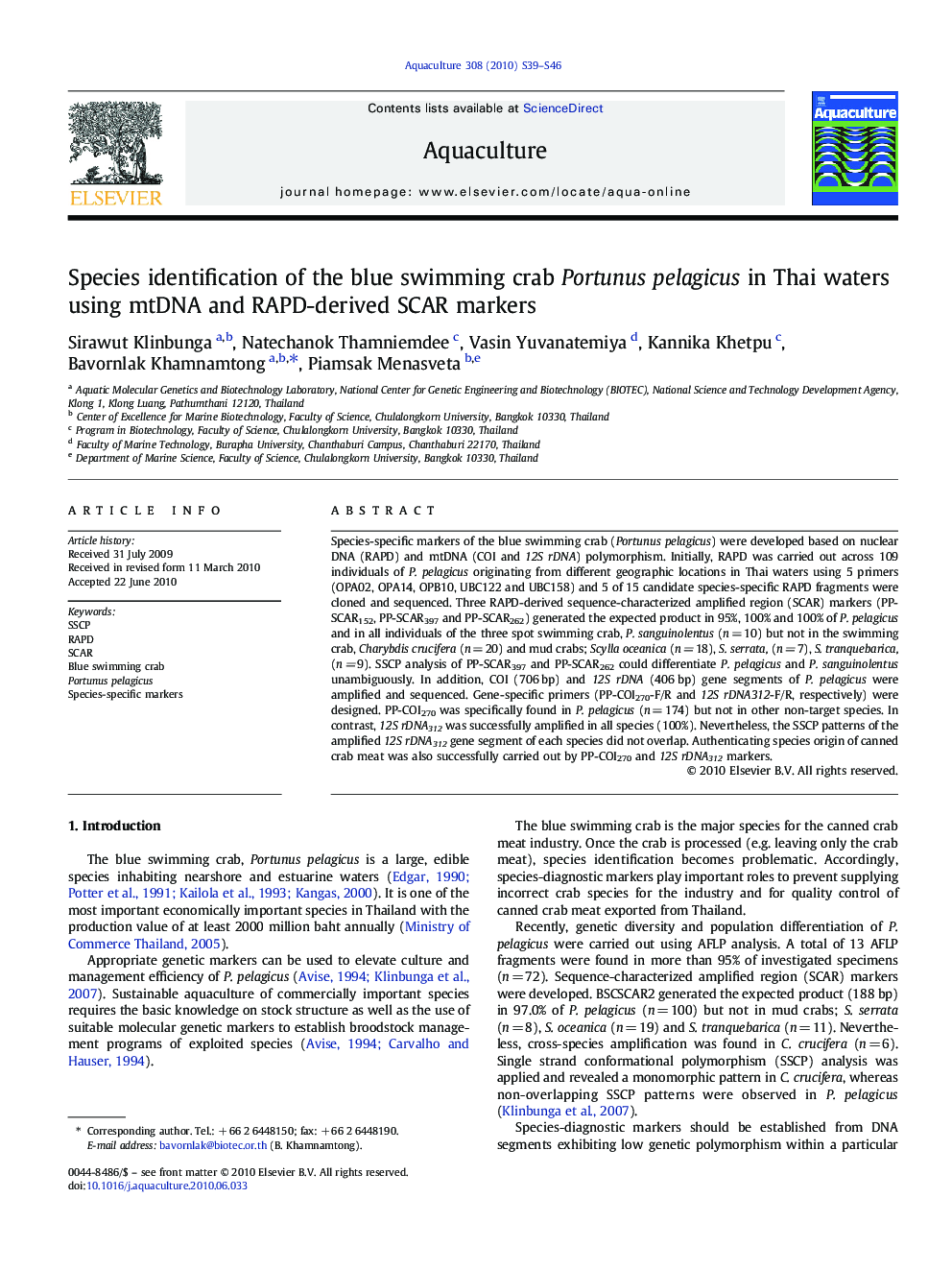| Article ID | Journal | Published Year | Pages | File Type |
|---|---|---|---|---|
| 2423371 | Aquaculture | 2010 | 8 Pages |
Species-specific markers of the blue swimming crab (Portunus pelagicus) were developed based on nuclear DNA (RAPD) and mtDNA (COI and 12S rDNA) polymorphism. Initially, RAPD was carried out across 109 individuals of P. pelagicus originating from different geographic locations in Thai waters using 5 primers (OPA02, OPA14, OPB10, UBC122 and UBC158) and 5 of 15 candidate species-specific RAPD fragments were cloned and sequenced. Three RAPD-derived sequence-characterized amplified region (SCAR) markers (PP-SCAR152, PP-SCAR397 and PP-SCAR262) generated the expected product in 95%, 100% and 100% of P. pelagicus and in all individuals of the three spot swimming crab, P. sanguinolentus (n = 10) but not in the swimming crab, Charybdis crucifera (n = 20) and mud crabs; Scylla oceanica (n = 18), S. serrata, (n = 7), S. tranquebarica, (n = 9). SSCP analysis of PP-SCAR397 and PP-SCAR262 could differentiate P. pelagicus and P. sanguinolentus unambiguously. In addition, COI (706 bp) and 12S rDNA (406 bp) gene segments of P. pelagicus were amplified and sequenced. Gene-specific primers (PP-COI270-F/R and 12S rDNA312-F/R, respectively) were designed. PP-COI270 was specifically found in P. pelagicus (n = 174) but not in other non-target species. In contrast, 12S rDNA312 was successfully amplified in all species (100%). Nevertheless, the SSCP patterns of the amplified 12S rDNA312 gene segment of each species did not overlap. Authenticating species origin of canned crab meat was also successfully carried out by PP-COI270 and 12S rDNA312 markers.
